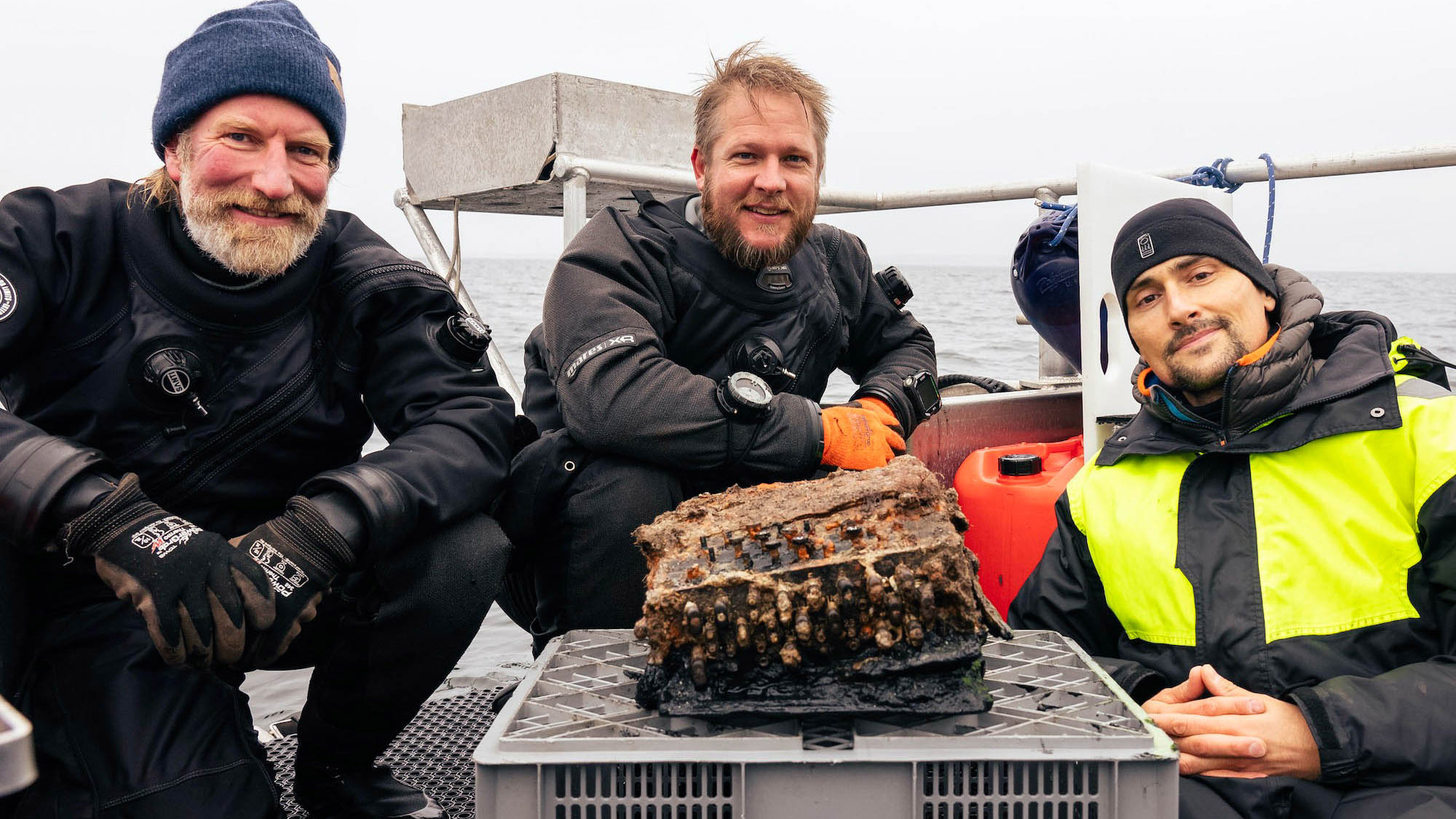Nazi 'Enigma' machine found at the bottom of the Baltic Sea

Divers trying to remove old fishing nets from the Baltic sea have accidentally stumbled on a Nazi code-making machine.
The Enigma machine, as it's called, looks a bit like a typewriter. In fact, the diver who found the device on the ocean floor initially thought that's what the artifact was, according to AFP. But the diving team, on assignment for the conservation group World Wide Fund for Nature (WWF), quickly realized that they had something much stranger.
During World War II, Enigma machines were used to encode German military messages, in hopes of preventing Allied powers from learning about troop movements and other plans. The devices consisted of a keyboard and a series of rotors that did the encoding. The rotors substituted different letters for the ones typed in; different Enigma machines used between three and eight rotors, which moved independently after each keystroke so that the same initial letter typed into the machine would appear as multiple different letters in the final code.

To decode the message at the other end, an operator just needed to know the starting position of the rotors and the routers between them. Once the encoded message was entered into an Enigma machine with the right configuration, the machine would spit out the original text.
Cracking the Enigma code was an enormous part of the Allied war effort. Polish mathematicians Marian Rejewski, Henryk Zygalski and Jerzy Różycki made the first attempts in 1939 and were able to recreate a mock-up of the Enigma machine, explain its basic functioning and decode many messages. They then handed this information over to British intelligence, according to the BBC, because the Germans were changing the codes daily, making it more difficult for the Polish team to decipher their messages.
British mathematician Alan Turing was crucial to the effort to decode the German Navy's Enigma messages, which were more complex, according to the Imperial War Museums. Cracking those codes was crucial for saving Allied ships from German U-boats, the submarines that sank more than 5,000 ships during World War I and more than 2,700 during World War II.
The Enigma machine found by the WWF diving crew was at the bottom of the Bay of Gelting in northeast Germany. It had three rotors, making it the type used on warships, not U-boats. That suggests that the machine may have been tossed overboard in the final days of World War II, in an attempt to keep the technology out of enemy hands, historian Jann Witt of the German Naval Association told the DPA news agency.
Sign up for the Live Science daily newsletter now
Get the world’s most fascinating discoveries delivered straight to your inbox.
The divers turned the machine over to the archaeology museum of the German state of Schleswig-Holstein, where archaeologists are restoring it. That project should take about a year, according to Ulf Ickerodt, head of the state archaeological office. The Enigma machine will then go on display at the museum.
Originally published on Live Science.

Stephanie Pappas is a contributing writer for Live Science, covering topics ranging from geoscience to archaeology to the human brain and behavior. She was previously a senior writer for Live Science but is now a freelancer based in Denver, Colorado, and regularly contributes to Scientific American and The Monitor, the monthly magazine of the American Psychological Association. Stephanie received a bachelor's degree in psychology from the University of South Carolina and a graduate certificate in science communication from the University of California, Santa Cruz.










